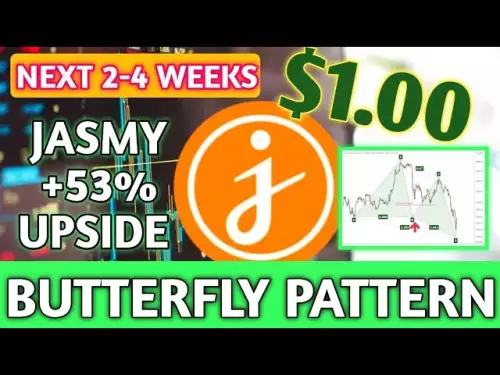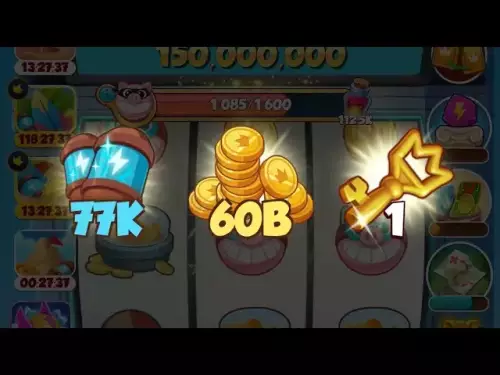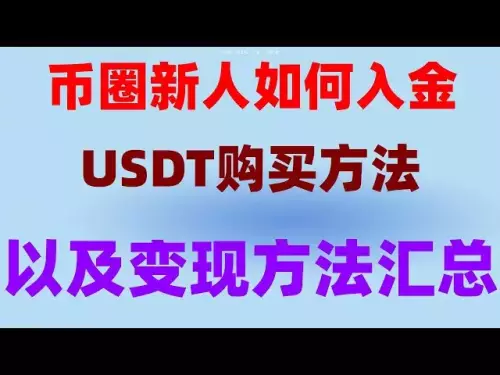-
 Bitcoin
Bitcoin $109500
-2.65% -
 Ethereum
Ethereum $4367
-7.16% -
 XRP
XRP $2.866
-4.11% -
 Tether USDt
Tether USDt $1.001
0.08% -
 BNB
BNB $834.2
-3.96% -
 Solana
Solana $186.7
-8.35% -
 USDC
USDC $0.9998
0.00% -
 TRON
TRON $0.3407
-4.70% -
 Dogecoin
Dogecoin $0.2086
-8.02% -
 Cardano
Cardano $0.8338
-6.54% -
 Chainlink
Chainlink $23.32
-8.27% -
 Hyperliquid
Hyperliquid $42.61
-6.17% -
 Ethena USDe
Ethena USDe $1.001
0.04% -
 Stellar
Stellar $0.3846
-4.40% -
 Sui
Sui $3.346
-7.20% -
 Bitcoin Cash
Bitcoin Cash $542.2
-6.29% -
 Avalanche
Avalanche $23.25
-8.12% -
 Hedera
Hedera $0.2314
-5.09% -
 UNUS SED LEO
UNUS SED LEO $9.576
-0.02% -
 Litecoin
Litecoin $109.6
-5.50% -
 Toncoin
Toncoin $3.120
-4.62% -
 Shiba Inu
Shiba Inu $0.00001198
-6.25% -
 Uniswap
Uniswap $9.635
-10.26% -
 Polkadot
Polkadot $3.731
-7.97% -
 Dai
Dai $1.000
-0.01% -
 Cronos
Cronos $0.1536
-1.37% -
 Bitget Token
Bitget Token $4.465
-3.57% -
 Monero
Monero $263.8
-3.16% -
 Aave
Aave $316.1
-8.24% -
 Ethena
Ethena $0.6228
-8.35%
Can MAVOL help in identifying pump and dump schemes?
MAVOL helps detect crypto pump and dump schemes by identifying abnormal volume spikes—when trading volume surges 3-5x above the average, it may signal coordinated manipulation, especially in low-market-cap tokens.
Aug 06, 2025 at 05:42 am
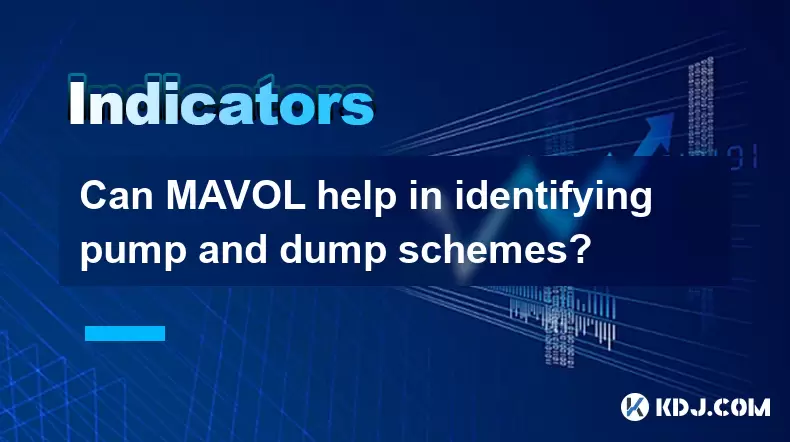
Understanding MAVOL in the Cryptocurrency Context
MAVOL, or Moving Average Volume, is a technical analysis tool used to evaluate the average trading volume of a cryptocurrency over a specific time period. It helps traders and analysts identify shifts in market sentiment by smoothing out volume fluctuations. When applied to cryptocurrency trading, MAVOL can highlight abnormal trading activity, which is often a precursor to manipulative market behaviors such as pump and dump schemes. Unlike price-based indicators, volume-based metrics like MAVOL provide insight into the strength behind price movements, making them valuable for detecting artificial surges in demand.
By calculating the average volume over a defined window—commonly 10, 20, or 50 periods—MAVOL establishes a baseline for normal trading activity. Deviations significantly above this average may signal coordinated buying, a hallmark of pump phases. For instance, if a low-cap cryptocurrency suddenly exhibits volume three to five times higher than its MAVOL, it warrants scrutiny. Such spikes often lack fundamental justification and may indicate orchestrated efforts to inflate prices rapidly.
How Pump and Dump Schemes Operate
Pump and dump schemes involve a group of coordinated actors artificially inflating the price of an asset through misleading or false statements, followed by selling off their holdings at peak prices. These schemes are particularly prevalent in the low-market-cap cryptocurrency sector, where liquidity is thin and price manipulation is easier to execute. The "pump" phase is characterized by a sharp, rapid increase in price and volume, often fueled by social media hype or private group promotions.
During the dump phase, insiders sell their pre-acquired tokens, causing the price to collapse. Retail investors who bought in during the pump are left holding devalued assets. Volume surges are a key indicator of such schemes, and this is where MAVOL becomes instrumental. By comparing current volume to historical averages, traders can spot anomalies that may precede or accompany these manipulative events.
Using MAVOL to Detect Abnormal Volume Patterns
To effectively use MAVOL for identifying suspicious activity, traders must configure their charting tools to display volume alongside the moving average volume line. Most platforms like TradingView or Binance allow users to add MAVOL directly to volume bars. The process involves:
- Navigating to the volume indicator settings
- Enabling the moving average overlay
- Setting the period (e.g., 20-day MAVOL)
- Adjusting the color for visual clarity
Once applied, traders should monitor for volume bars that tower over the MAVOL line. A single spike may not be conclusive, but repeated or extreme deviations—especially in conjunction with rapid price increases—suggest manipulation. For example, a cryptocurrency trading with a typical daily volume of 100,000 USDT suddenly jumping to 500,000 USDT while price rises 150% in an hour is a red flag. The disproportion between volume and price movement can be quantified using MAVOL as a benchmark.
Correlating MAVOL with Price and Market Cap
Effective detection requires combining MAVOL with other metrics. A standalone volume spike may result from legitimate news, exchange listings, or partnerships. To reduce false positives, traders should analyze the relationship between volume, price change, and market capitalization. For instance, a 300% volume spike on a top-10 cryptocurrency like Bitcoin is less suspicious than the same spike on a micro-cap token with a $5 million market cap.
Traders can perform this analysis by:
- Calculating the current market cap using circulating supply and price
- Comparing the trading volume to market cap (volume-to-market-cap ratio)
- Observing whether the volume surge is sustained or brief
A healthy asset typically has a volume-to-market-cap ratio below 10–20%. Ratios exceeding 50%—especially when volume is multiple times the MAVOL—strongly suggest artificial activity. Additionally, if the price fails to hold gains after the volume spike, it confirms a lack of organic demand, aligning with dump behavior.
Integrating MAVOL into a Broader Detection Strategy
While MAVOL is powerful, it should not be used in isolation. Combining it with other tools enhances detection accuracy. For example, integrating order book analysis can reveal large buy walls appearing just before a price surge, often placed by pump organizers. Social sentiment monitoring tools can detect coordinated hype campaigns on platforms like Telegram or Twitter.
Another complementary technique is monitoring whale wallet movements using blockchain explorers like Etherscan or Solscan. If a few addresses are moving large quantities of a token just before a volume spike, it supports the pump and dump hypothesis. Traders can set up alerts for such movements and cross-reference them with MAVOL readings.
Furthermore, using multiple timeframes provides deeper context. A volume spike on the 5-minute chart may seem significant, but if the 4-hour MAVOL shows no deviation, the anomaly might be short-lived noise. Conversely, a spike visible across 1-hour, 4-hour, and daily charts reinforces the likelihood of manipulation.
Practical Steps for Real-Time Monitoring
To actively use MAVOL for detecting pump and dump schemes, follow these steps:
- Select a cryptocurrency screener that supports volume and MAVOL filtering
- Sort assets by volume-to-MAVOL ratio (e.g., current volume divided by 20-day MAVOL)
- Focus on coins with ratios above 3.0
- Check price change over the same period (e.g., +50% or more)
- Examine the order book for artificial buy walls
- Review social channels for coordinated promotion
- Use on-chain tools to track large transfers
Platforms like CoinGecko, CoinMarketCap, and DexScreener offer real-time data that can be filtered by volume spikes. DexScreener, in particular, allows users to set custom alerts for volume surges relative to moving averages, making it ideal for spotting early-stage pumps.
Frequently Asked Questions
What is a typical MAVOL period used for detecting manipulations?
The 20-period MAVOL is commonly used because it balances responsiveness and stability. Shorter periods like 10 may generate false signals due to normal volatility, while longer periods like 50 might lag too much to catch fast-moving pumps.
Can MAVOL be used on decentralized exchanges (DEXs)?
Yes, MAVOL works on DEXs as long as volume data is available. Tools like DexScreener and Dune Analytics provide volume charts with moving averages for tokens on networks like Ethereum, BSC, and Solana.
Does a high volume relative to MAVOL always indicate a pump and dump?
No, high volume alone is not conclusive. Legitimate events like exchange listings, major partnerships, or protocol upgrades can cause genuine volume spikes. Context such as price action, news, and on-chain activity must be evaluated alongside MAVOL.
How can I set up volume spike alerts based on MAVOL?
Use DexScreener’s alert system to create custom filters. Set conditions like “Volume > 3 × 20-period MA” and “Price change > 50% in 1 hour.” Enable email or Telegram notifications to receive real-time alerts.
Disclaimer:info@kdj.com
The information provided is not trading advice. kdj.com does not assume any responsibility for any investments made based on the information provided in this article. Cryptocurrencies are highly volatile and it is highly recommended that you invest with caution after thorough research!
If you believe that the content used on this website infringes your copyright, please contact us immediately (info@kdj.com) and we will delete it promptly.
- Heritage Distilling's Token Deal: A Bold Balance Sheet Strategy
- 2025-08-26 06:45:14
- Coinbase Hack, Solana Shenanigans, and Wallet Woes: What's a Crypto OG to Do?
- 2025-08-26 06:45:14
- Bitcoin, Institutional Adoption, and Volatility: A 2025 Perspective
- 2025-08-26 08:05:14
- MAGACOIN, Ethereum, and XRP Growth: What's the Buzz?
- 2025-08-26 08:30:13
- ETHZilla's Bold Moves: Share Buyback and Ethereum Holdings Under Scrutiny
- 2025-08-26 08:05:14
- Cardano, ADA Price, and the ETH L2 Meme Coin Frenzy: What's Next?
- 2025-08-26 08:50:13
Related knowledge
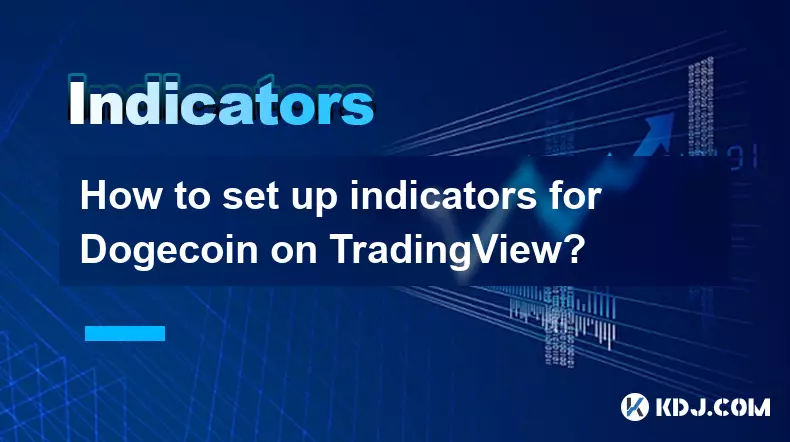
How to set up indicators for Dogecoin on TradingView?
Aug 25,2025 at 04:23pm
Understanding Dogecoin and TradingView1. Dogecoin, initially created as a meme-based cryptocurrency, has evolved into a widely traded digital asset. I...

What does it mean when the +DI and -DI cross frequently in the DMI indicator but the ADX is flattening?
Aug 11,2025 at 03:15am
Understanding the DMI Indicator ComponentsThe Directional Movement Index (DMI) is a technical analysis tool composed of three lines: the +DI (Positive...

What does the sudden appearance of a "dark cloud cover" candlestick pattern during an uptrend indicate?
Aug 13,2025 at 11:35am
Understanding the 'Dark Cloud Cover' Candlestick PatternThe dark cloud cover is a bearish reversal pattern in technical analysis that typically appear...

What does it mean when the moving average, MACD, and RSI all send buy signals simultaneously?
Aug 11,2025 at 01:42pm
Understanding the Convergence of Technical IndicatorsWhen the moving average, MACD, and RSI all generate buy signals at the same time, traders interpr...

What does it mean when both the KDJ indicator and the RSI show overbought signals simultaneously?
Aug 13,2025 at 11:35am
Understanding the KDJ Indicator in Cryptocurrency TradingThe KDJ indicator is a momentum oscillator derived from the Stochastic Oscillator, widely use...

What does it mean when the price is trading above the SAR indicator but the red dots are densely packed?
Aug 09,2025 at 11:49pm
Understanding the SAR Indicator and Its Visual SignalsThe SAR (Parabolic Stop and Reverse) indicator is a technical analysis tool used primarily to de...

How to set up indicators for Dogecoin on TradingView?
Aug 25,2025 at 04:23pm
Understanding Dogecoin and TradingView1. Dogecoin, initially created as a meme-based cryptocurrency, has evolved into a widely traded digital asset. I...

What does it mean when the +DI and -DI cross frequently in the DMI indicator but the ADX is flattening?
Aug 11,2025 at 03:15am
Understanding the DMI Indicator ComponentsThe Directional Movement Index (DMI) is a technical analysis tool composed of three lines: the +DI (Positive...

What does the sudden appearance of a "dark cloud cover" candlestick pattern during an uptrend indicate?
Aug 13,2025 at 11:35am
Understanding the 'Dark Cloud Cover' Candlestick PatternThe dark cloud cover is a bearish reversal pattern in technical analysis that typically appear...

What does it mean when the moving average, MACD, and RSI all send buy signals simultaneously?
Aug 11,2025 at 01:42pm
Understanding the Convergence of Technical IndicatorsWhen the moving average, MACD, and RSI all generate buy signals at the same time, traders interpr...

What does it mean when both the KDJ indicator and the RSI show overbought signals simultaneously?
Aug 13,2025 at 11:35am
Understanding the KDJ Indicator in Cryptocurrency TradingThe KDJ indicator is a momentum oscillator derived from the Stochastic Oscillator, widely use...

What does it mean when the price is trading above the SAR indicator but the red dots are densely packed?
Aug 09,2025 at 11:49pm
Understanding the SAR Indicator and Its Visual SignalsThe SAR (Parabolic Stop and Reverse) indicator is a technical analysis tool used primarily to de...
See all articles





















